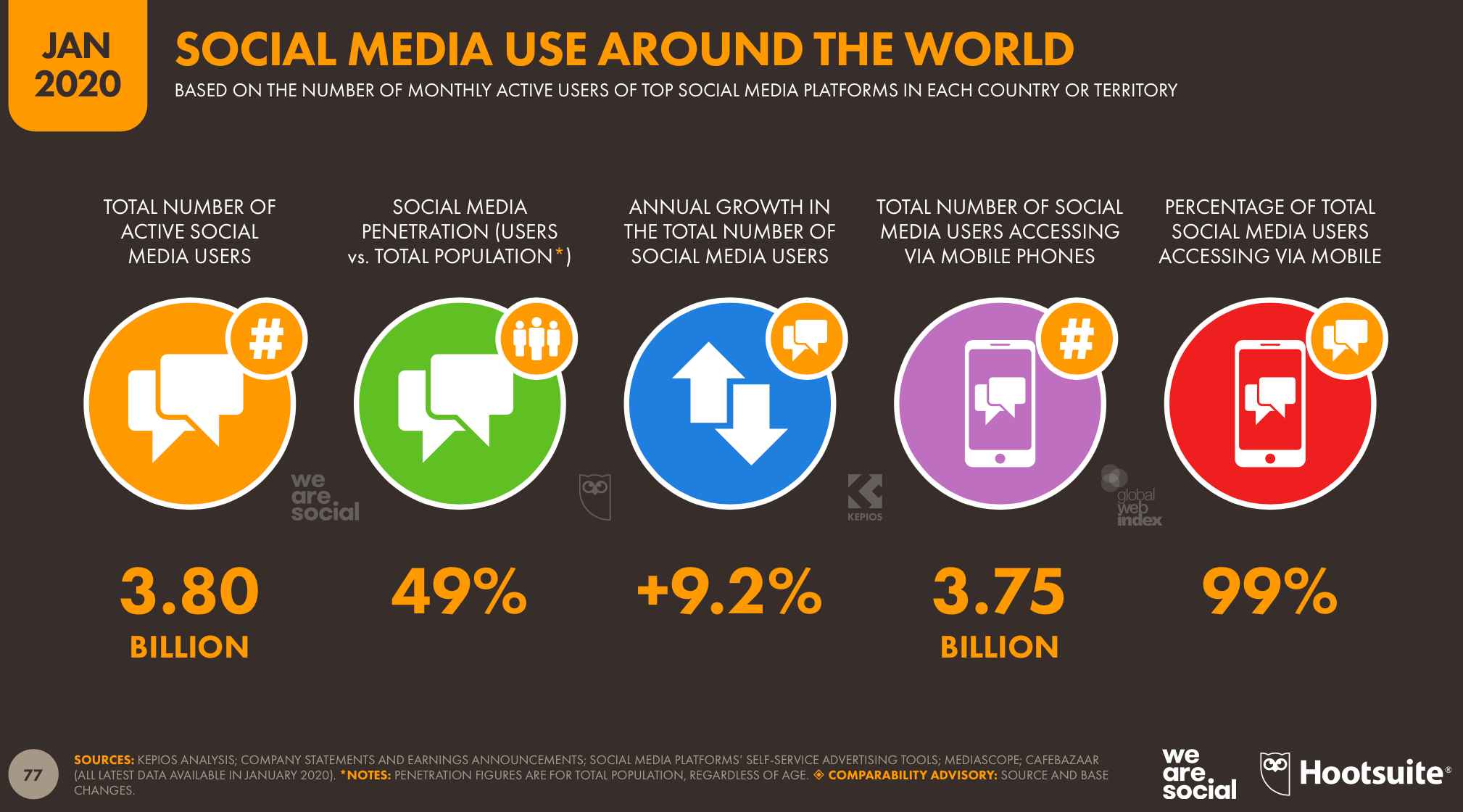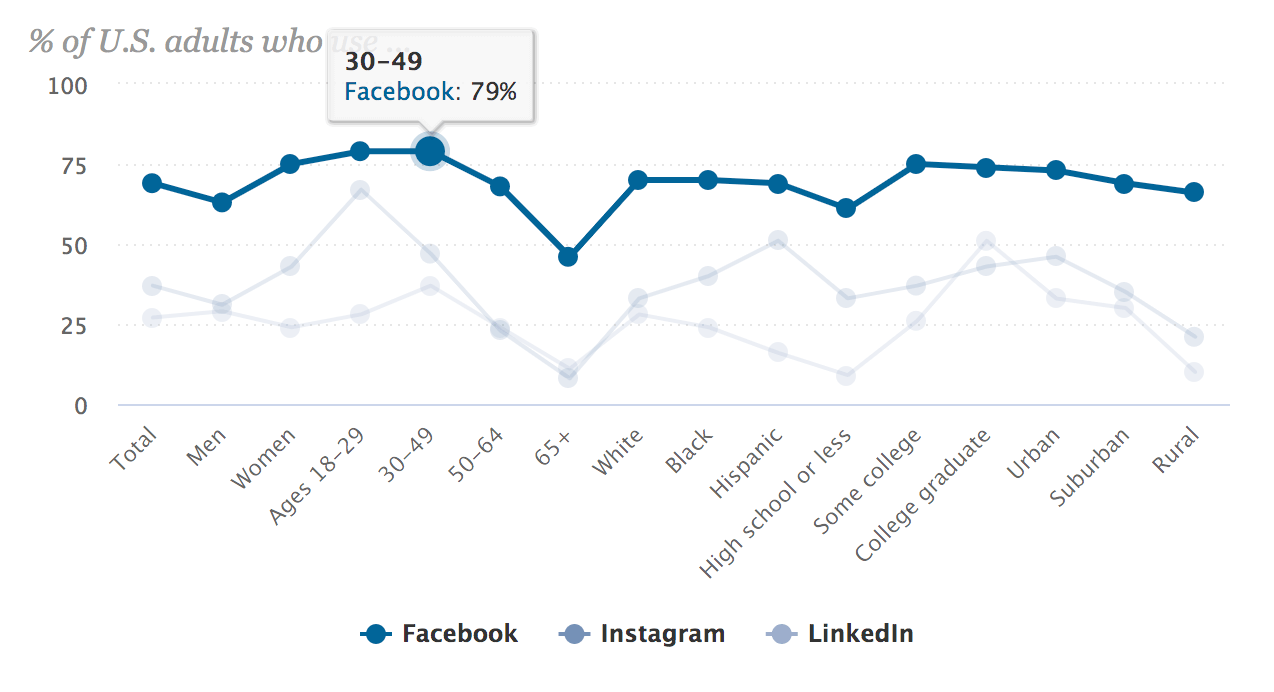In today’s world, social media marketing is imperative for the success of a brand. After all, as per Statista, over 40 percent of the global population is present on social media.
To further break it down, according to data collected by Emarketer, 48 percent of baby boomers, 77.5 percent of Generation X, and 90 percent of Millennials have active social media accounts.

So, regardless of which sector you operate in, there is a high probability of finding your target audience online. Research from the Global Web Index illustrates that the younger generation mainly uses social media for carrying out product searches.
In light of these statistics, it is safe to say that social media marketing is a must. However, you cannot have a single social media marketing strategy for every platform. Instead, a successful social media campaign calls for choosing the right channel and creating the perfect strategy specifically for it.
Here is how you can do so:
Identify Your Social Media Objectives
You can only realize the benefits of social media if you align your goals with your strategy. Therefore, the first step to creating a strategy and choosing the right channel is to take a step back and identify your objectives.
Decide what you want to achieve through your social media presence and campaigns. It will help in deciding which channel is best for achieving the goal.
For starters, let’s say you wish to boost your brand awareness. Here, a platform that has the most audience is the right choice. Currently, Facebook leads the board. Moreover, for brand awareness, the best strategy is to use paid advertising promotion. Facebook’s advertising options can be helpful here.
On the other hand, if you want better engagement through social media contests or giveaways, Instagram is a more suitable option. The use of hashtags and stories makes it an ideal platform for engaging content.

Research Your Target Audience
Even the best of social media engagement ideas won’t work if you direct them at a platform that isn’t frequently used by your target audience.
Every social media platform caters to a given type of audience. According to a report by Pew Research Center, even though Facebook continues to be a market leader, its usage among teens has decreased. Now, only 51 percent of teens use the platform compared to 71 percent in 2017.

So, if your target audience is teenagers, Facebook won’t be the right channel for you. To make sure that your social media marketing budget doesn’t go to waste, you must research the audience, their social media usage, and behavior.
Use insights and data to decide where you are most likely to find your target audience and prioritize that channel in your marketing strategy. It doesn’t mean you shouldn’t have at least some presence on other channels. It just means that your focus should be on the one that offers the best ROI.
Know What You Are up Against
It is always a good idea to keep tabs on your competitors. Identify the key players in your business and learn from their social media marketing efforts.
You can begin by conducting a competitive analysis to gauge the effectiveness of their campaigns. It will help you in creating your social media marketing strategy. See which platforms they are most active on and the type of campaigns they run.
It will also help in identifying opportunities for your brand. For example, you found that your target audience is present of Facebook and Twitter, and your competitor is already dominant on Facebook.
Now, rather than trying to make a mark in a place they have already mastered, build your presence on Twitter. It allows you to quickly increase your followers without having to fight off your rivals. Once you are strong enough, you can then enter platforms where your competitors are dominating.
Create Engaging Content
Once you have narrowed down your primary social media channels based on insights from your target audience and competitors, it is time to focus on the content you will be posting on your accounts.
It is a critical step in creating a social media strategy. After all, everything boils down to your content and its effectiveness. Here are some tips you can follow when creating content:
Have a Consistent Theme for Campaigns
Make sure that you have a consistent template for each campaign.

For example. Dove, a famous brand of Unilever, started a campaign #SpeakBeautiful on Twitter. The campaign went on to win awards due to its effectiveness. One thing that the company ensured was the use of a consistent blue and white template throughout.
Encourage User-Generated Content
Rather than solely relying on your following, convert your followers into advocates through engaging content that customers can then reshare to boost engagement rate. For instance, campaigns that require customers to post a photo to earn an incentive help in boosting engagement rates.

Leverage Time-Sensitive Content
As per psychologists, Fear of Missing Out (FOMO) is an actual phenomenon. And you can tap into it by using the “stories feature” of Facebook and Instagram. Since stories are time-sensitive, people tend to view it more often than posts.
But what should you post?
Well, you can use stories to show behind-the-scenes to make your brand seem more approachable and personal. Also, use it to post about flash sales and discounts.
Draft a Social Media Calendar
Now that you have your social media marketing campaign ready, it is time to create a social media calendar.
It will include deciding what to post and when. Again, the right time and frequency of posts will depend on the channels you’re using. Different days see varying traffic and that too at different times on given platforms.
Data analytics can help you get an idea about when to post and in what frequency. Once you have that insight, you can create a posting schedule. List down the date, time, platform, and the type of content to be posted in the calendar.

Make sure that the content mix you create supports your business goal. Don’t just focus on one goal. You must achieve a variety of goals through your social media marketing strategy. Some goals include brand awareness, lead generation, website conversion, and employer branding.
Set up percentages for each objective. For instance, you could decide that 50 percent of your social media marketing efforts should focus on brand awareness, while 20 percent should revolve around lead generation.
Monitor and Adjust
Finally, you must effectively monitor your social media campaigns to ensure that your objectives are being met. Track data and important metrics like conversion rate, engagement rate, the share of voice, etc.
If you find that your efforts are not reaping the right results, re-evaluate your strategy, and alter it accordingly. Back your insights with surveys and user feedback to better understand how you can fix problems in your strategy.
Ending Remarks: Have a Robust Online Presence
With the right insights and strategy, you can easily have a strong online presence, which you can then leverage to achieve your business goals. Perform each step mentioned in this blog meticulously and see the surge in your revenue and brand recognition.
DepositPhotos – social media strategy


